4 practical examples of the power of real-time ERP data
For what seems like an age, legacy ERP systems relied on a data funnel that looked like this; data input, query, data gathering, final report. This funnel has now been replaced by real-time ERP databases which perform the input, query, data gathering, and reporting in the blink of an eye. Here are practical examples of how this technology can be applied across many industries.
1. Distribution
A semi-tractor-trailer truck pulls off the highway and drives up the road to a distribution center. As it passes the gate, scanners read the identification on the trailer and relay that information to the distribution ERP system. That trailer ID is instantly matched in the database to an advance shipping notification (ASN) and then to several purchase orders expected from a supplier.
The ERP system looks at the demand for those purchase orders and determines the optimal dock door for this delivery. A few seconds after passing the gate scanner, the truck is rolling and the driver is informed to take the trailer to the west side and dock number 47.
Guide: 70 features to look for in your new ERP
Thanks to lookup and delivery of information from real-time ERP processes, the driver’s time is efficiently managed because they do not need to stop at an office to check-in. The distribution center is efficiently managed as the load is delivered where it will be stored or cross-docked to another outbound delivery.
2. Construction
Pipe assemblies, sheet metal, rebar, windows, and various materials are dropped off at a construction site as a building is erected. Each is tagged with RFID or bar codes allowing the ERP system to link that particular item with the specific trade and group of ERP users that will require the item. The material is also linked to the architect and engineering models for the building. The concrete deck for the third floor is hardened now and material handlers and crane operators know exactly what items need to be delivered, where they need delivering, and who requires them.
The plumbing foreman gets a message on the mobile ERP app that all their material is ready for installation. The right materials are ready to be used by the right trade at exactly the right time and the total cost of construction is reduced.
3. Manufacturing
A manufacturer receives a customer purchase order requesting delivery of a complex product in three weeks. Real-time ERP automatically converts the purchase into several production jobs and schedules that work along with thousands of existing production jobs.
If a problem is found on the expected delivery of any order, a planner is notified by the ERP system straight away. Usually, the job schedule fits together and dispatch orders are transmitted to work cells throughout the plant without human intervention. ERP can manage the many variables in a manufacturing environment often better than its workforce.
4. Transportation
Tug boats push an 85,000-ton cargo ship to the side of a dock where three other ships are already loading and unloading cargo containers. There are 9,214 containers on this vessel. 2,163 will be unloaded and 1,814 will be loaded for delivery at ports along the ship’s route. 525 containers will need to be unloaded and replaced making space to retrieve the planned unloading.
High above the ship the operator of the ship-to-shore gantry crane already has the plan for unloading in his ERP account and the crane is already moving to the first container. Real-time ERP systems received the storage plan from the previous port and calculated the optimal sequence to move containers. The reloading plan took into consideration where the container will be delivered as well as vessel trim so weight is evenly distributed on the ship.
Real-time ERP systems extend to the dock, where trucks and trains deliver or pick up containers. Straddle carriers move containers between trucks and quay-side STS cranes. These systems help get ships back underway quickly, maximizing efficiency and profitability.
Real-time information flow keeps people working and products moving very effectively and efficiently across a huge range of industries. Can you afford to ignore its potential?
Free white paper
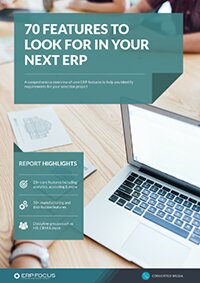
70 features to look for in your next ERP
A comprehensive guide to help you identify requirements for your ERP selection
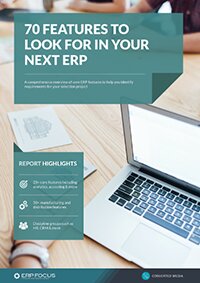
Featured white papers
-
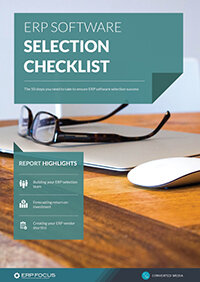
60-Step ERP Selection Checklist
Get the comprehensive checklist for your ERP selection project
Download -

70 features to look for in your next ERP
A comprehensive guide to help you identify requirements for your ERP selection
Download -
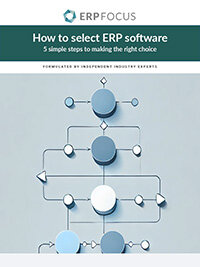
How to Select ERP
Learn to select your ERP in 5 easy steps by following our expert's advice
Download
Related articles
-
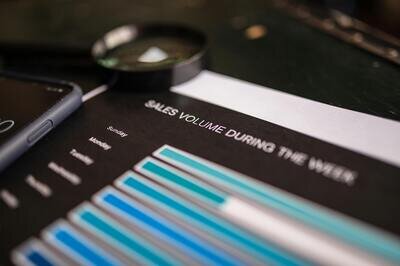
Top benefits of ERP inventory management
How an ERP helps inventory management including four key advatages
-

Secret KPI: Why Your ERP Implementation Team Matters More Than Software
Learn how Godlan ensures successful ERP implementation for manufacturers with proven strategies &...
-

How to conduct a thorough ERP audit
The types of ERP audit, and step-by-step instructions on how to audit your ERP system

